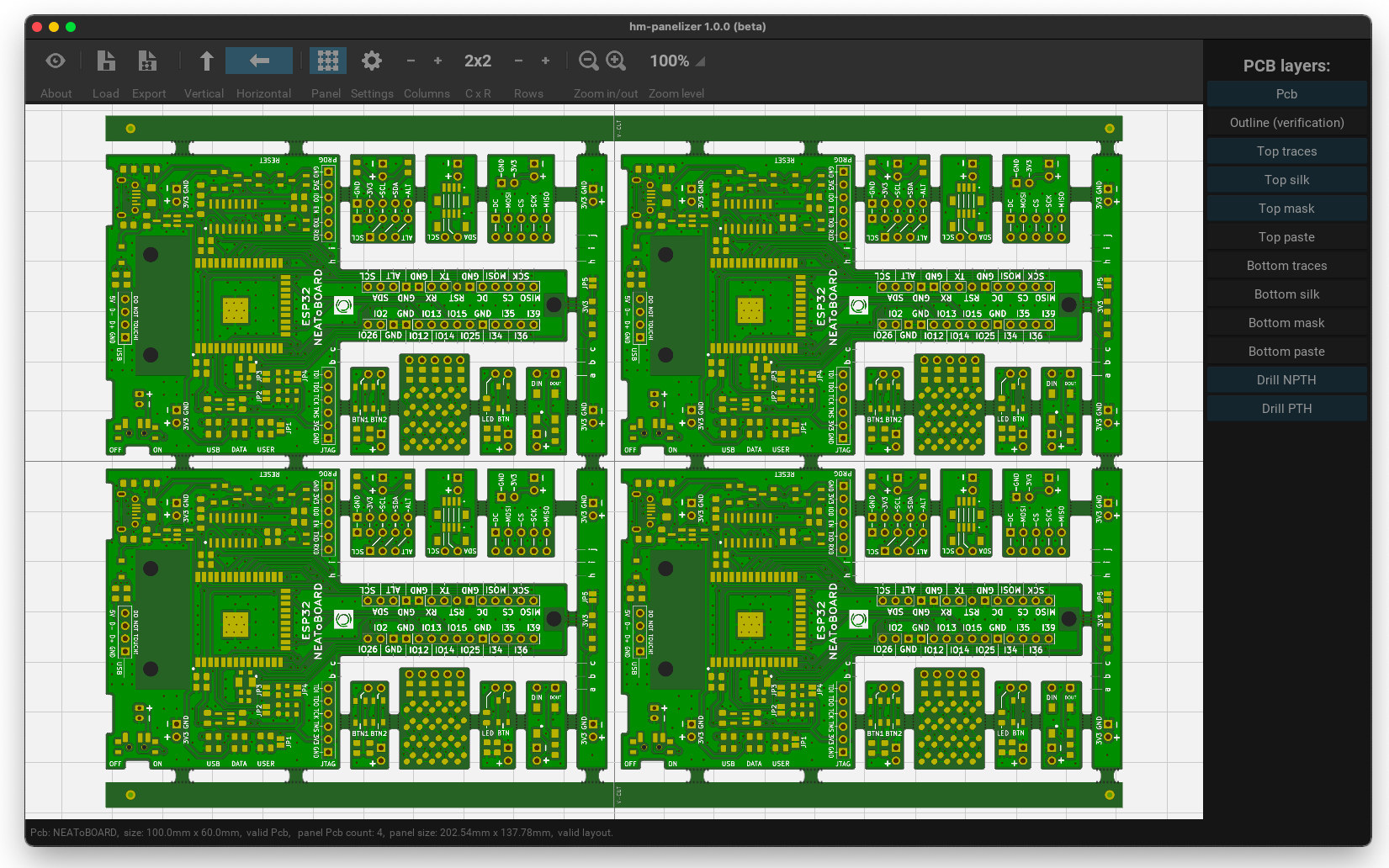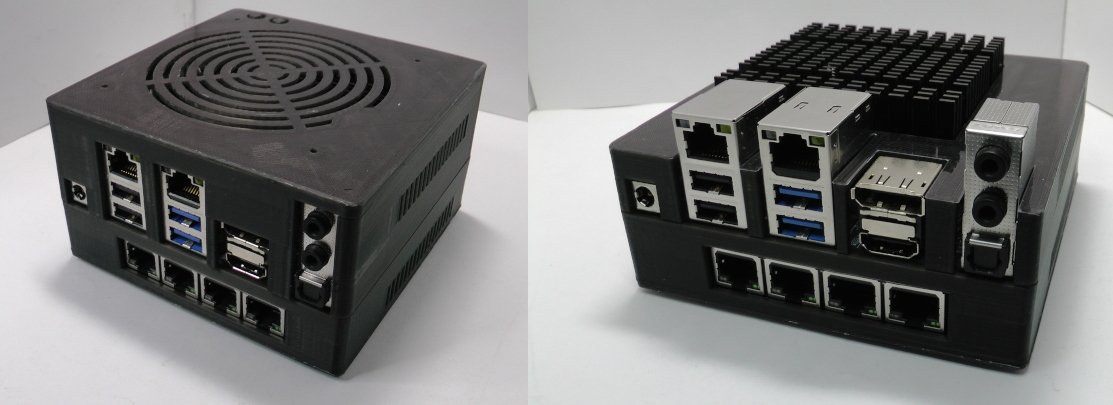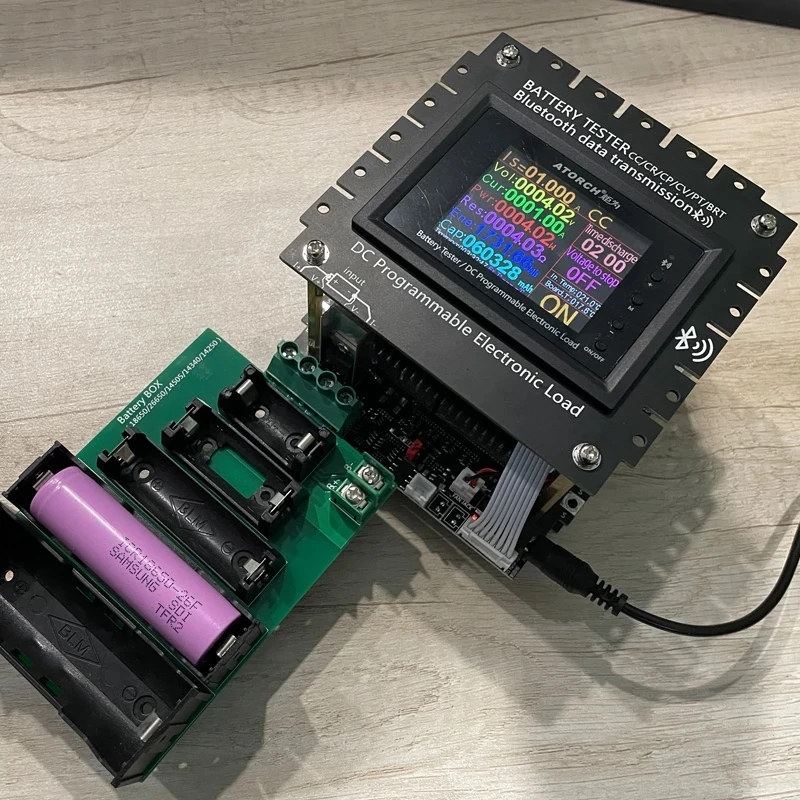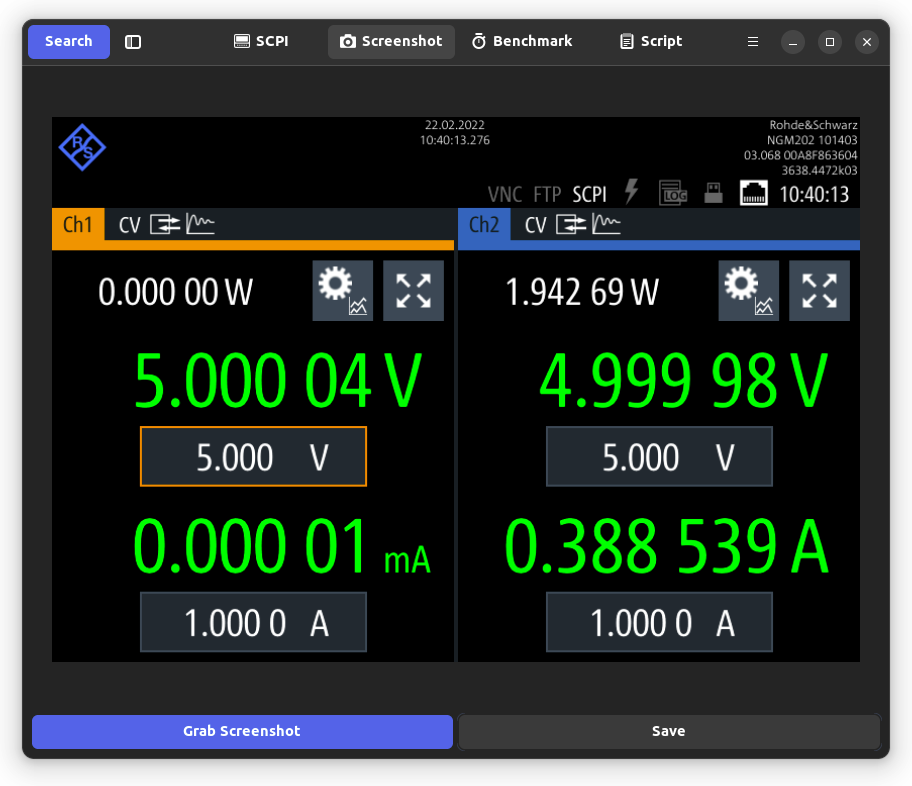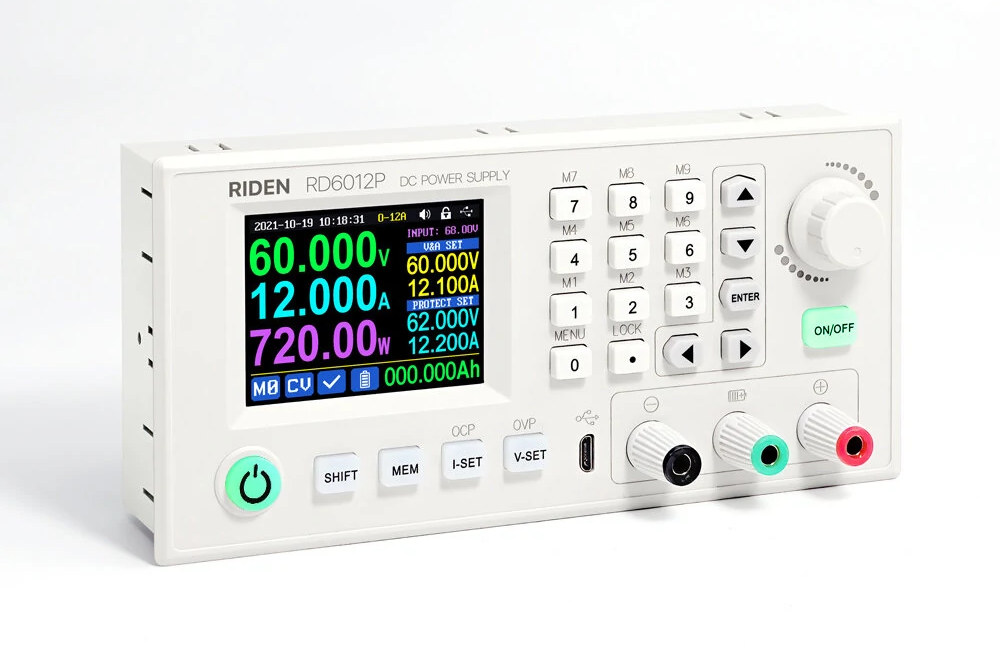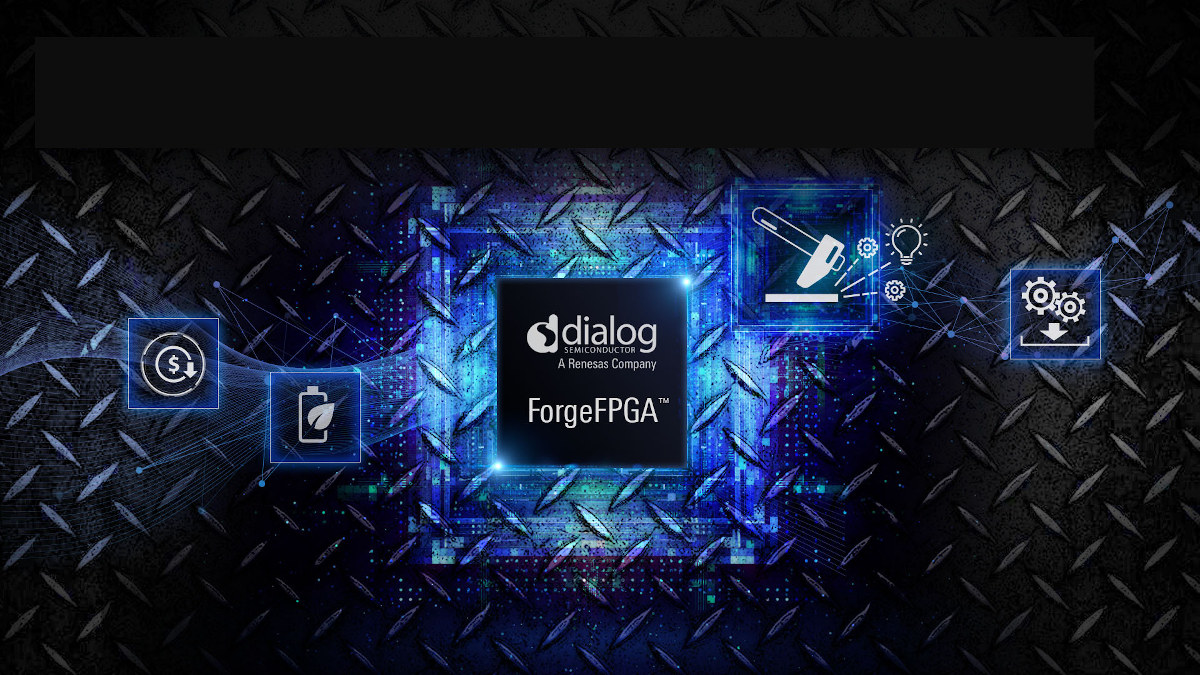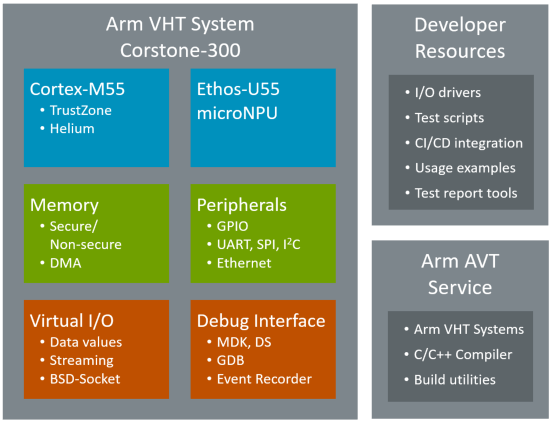Pixel Pump is an open-source hardware vacuum pump that should be easier to use than a pair of tweezers to pick and place SMT components, and suitable for prototypes and small production runs. The system comes with a pen with five exchangeable stainless-steel nozzles to match the size of components, a foot pedal, and several tactile silicone buttons with RGB backlighting to control the unit. The button on the unit (customized parts bought from Alibaba) allows you to change operation modes, switch between high- and low-power settings, or activate reverse mode to clean your nozzle. It’s also possible to configure vacuum power and LED brightness with the buttons. The foot pedal is used to control the vacuum pump to pick up and release the components. A serviceable air filter is also integrated into the design to protect the vacuum pump and valves from debris. Robin Reiter, Pixel Pump’s designer, explains […]
hm-panelizer – A KiCad companion GUI tool for panelizing PCBs
Gerard (aka halfmarble) has released hm-panelizer open-source software allowing for a panelization of PCBs via a simple GUI interface and doubling as a Gerber file viewer. He’s mostly tested it with PCBs designed in KiCad 6.x, but it should also work with design files from other tools. Note that hm-panelizer is just a side project, and Gerard released it as an open-source project in hopes that it might be useful to users and the community will contribute to it. The project relies on kivy cross-platform library, pygame and pycairo libraries, as well as pcb-tools and pcb-tools-extension projects. There are some requirements for the utility to work on with your PCB : Use the metric system The PCB Gerber files must use Altium/Protel filename extensions The board outline gerber file (.gm1) must be present “Disable aperture macros” when exporting Gerber files (this may not be needed for simple designs and only […]
DIY SBC cases and SBC Case Builder tool based on OpenSCAD
Since you can’t always rely on single board computer (SBC) vendors to provide a case to match your needs, some went the DIY route. Willy Tarreau designed some laser-cut enclosures with Inkscape for various SBCs, while hominoids went a step further by developing the “SBC Case Builder” tool to automatically generate various types of 3D printable enclosures using OpenSCAD. Willy designed five similar enclosures for Khadas VIM3/VIM3L, FriendlyELEC NanoPi Fire3, SolidRun Clearfog Base networking SBC, Libre Computer AML-S805X-AC (aka “La Frite”), and AAEON UP Board. All cases are available in Inkscape SVG format, and Willy accepts contributions for other boards. You’ll need a laser engraver or CNC router to cut out those enclosures. Hominoids’ SBC Case Builder project attempt to automatize enclosure generation for SBCs using SBC Model Framework written in OpenSCAD. Work has focused on ODROID boards so far, but it should work for other vendors too. The parameters […]
Bluetooth battery tester also serves as DC programmable load
While it’s possible to quickly check a battery with a multimeter, the DL24MP-150W Bluetooth battery tester and DC programmable load allows testing of all sorts of batteries from a 18650 battery to a lead-acid car battery, monitoring of multiple parameters with voltage, current, power, capacity, temperature, and more, and simulating a discharge. You can visualize the parameters on the integrated color display, or through Bluetooth connectivity, check out the parameters and history in an Android smartphone or a PC running Windows. The program also shows additional parameters like estimated CO2 emissions and electricity charge, plus export of parameters to a spreadsheet for further analysis. DL24MP-150W Bluetooth battery tester specifications: Test voltage – 2 to 200V Current: 0.2~20A Discharge power – Up to 150 W Sensor – Temperature sensor Adapter boards Charging board with DC jack, mini USB, micro USB, and USB Type-C port Battery test board for 18650, 26650, 14505 […]
Open-source LXI Tools is made for “LAN eXtensions for Instrumentation” compliant test instruments
LXI Tools is an open-source project designed to manage Ethernet-connected test instruments such as oscilloscopes, power supplies, spectrum analyzers, etc… that are compliant with the “LAN eXtensions for Instrumentation” standard, or LXI for shorts, hence the name of the project. LXI Tools is available either as a command-line program (lxi) or a graphical user interface (lxi-gui), and includes features such as the automatic discovery of test instruments, sending SCPI (Standard Commands for Programmable Instruments) commands, grabbing screenshots from supported instruments, benchmarking SCPI message performance, and Lua scripting for test automation. The tool is compatible with higher-end instruments compatible with LXI from vendors such as Keysight Technologies, Kikusui Electronics, Rigol Technologies, Rohde & Schwarz, Siglent Technologies, and Tektronix. All support SCPI commands, while autodiscovery and screenshot functions are supported by most tested models. While it’s possible to build the project from source using meson, the easiest way to install LXI Tools […]
RIDEN RD6012P USB and WiFi DC power supply connects to your PC or smartphone
Bench DC power supplies are usually adjusted with some buttons and rotary encoders, but RIDEN RD6012P DC power supply can be controlled from your PC via USB, and there’s RD6012P-W model that adds a WiFi module to adjust parameters from a smartphone running Android or iOS. Besides the “smart” functions, the bench power supply supports 0V to 60V voltage range and up to 12A current for a maximum of 720W output power and comes with an HD color display with 5 digits for each voltage, current, and power measurement, and a setup menu. RIDEN RD6012P(-W) power supply specifications: Display – 2.4-inch color HD display with adjustable brightness Host interface – Micro USB port and optional WiFi module (fitted to RD6012P-W model) Input voltage – 7 – 70.00V with 0.01V resolution, ±(1% + 5 digits) accuracy Output voltage – 0 – 60.000V with 0.001V resolution, ±(0.5‰ + 4 digits) accuracy Output […]
Renesas introduces sub 50 cents FPGA family with free Yosys-based development tools
Renesas has just unveiled the ForgeFPGA family of low-cost low-power FPGA’s to go for under 50 cents in (large) volumes following their acquisition of Dialog Semiconductors last August, who previously designed the GreenPAK programmable mixed-signal matrix. The company says its FPGAs consume half the power of competing FPGAs with a standby current of under 20uA, the price point will enable the use of FPGA in new markets and IoT products, and the tools will be free, at least as in beer, without any license to acquire or install. The full specifications are not available yet, but the ForgeFPGA Family will come with a maximum of 5,000 gates of logic, and the first devices ship with 1K and 2K Look Up Tables (LUTs), and as just mentioned, will operate at ultra-low power as low as 20 microamps in standby. ForgeFPGA is expected to target the same market as GreenPAK notably embedded […]
Cortex-M55 based Arm Virtual Hardware is now available in AWS Cloud
The Arm DevSummit 2021 is taking place on October 19-21, and the first announcements from Arm are related to IoT with “Arm Total Solutions for IoT delivering a full-stack solution to significantly accelerate IoT product development and improve product ROI”, “Project Centauri” aiming to achieve for an extensive Arm Cortex-M software ecosystem in the way that Project Cassini does for the Cortex-A ecosystem, starting with support for PSA Certified and Open-CMSIS-CDI cloud-to-device specification, and Arm Virtual Hardware based on Corstone-300 IoT platform with a Cortex-M55 MCU core and an Ethos-U55 microNPU accessible from Amazon Web Services. The first two are quite abstract right now, and more information may become available in the future, but the Arm Virtual Hardware is available now from AWS as a public beta, with 100 hours of free AWS EC2 CPU credits for the first 1,000 qualified users. The virtual hardware does not emulate only the […]


